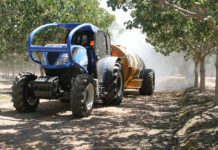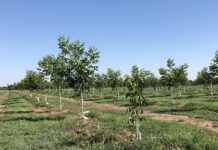Bowing to continued pressure from the environmental justice community and anti-pesticide activists, the California Department of Pesticide Regulation (CDPR) is now proposing a statewide approach to their effort to provide advance notification to the public on pesticide applications. This is despite pilot projects in four counties that failed to demonstrate an outcry from the public that reside in the immediate areas where the pesticides are being applied.
The proposed regulation will require all agricultural use Notice of Intents (NOIs) to be electronically submitted to the County Ag Commissioner (CAC) via the Cal Ag Permits system (www.CalAgPermits.org). In addition, the proposed action will require all NOIs for soil fumigation to be electronically submitted to the local CAC 48 hours before the intended start of the application. The amendments will also add specificity to the information required for an NOI and will require specific information from an NOI required for the use of a restricted material requiring a permit for the production of an agricultural commodity to be electronically submitted to CDPR via www.calagpermits.org, at least 48 hours in advance of the intended start of a soil fumigation and at least 24 hours in advance of the intended start of a non-soil fumigant application. The proposed regulations also required CDPR to provide specific NOI information to the public upon receipt or as soon as practicable.
This is where the issue begins. We all know CDPR’s charge is to regulate pesticides. In their own words, “California’s approach is based on a strong scientific foundation. The State has built the most comprehensive state pesticide regulation program in the nation. Our task is to ensure that pesticides are used safely. Our standards are uncompromising, like our commitment to protect people and the environment. CDPR is not only the premier state agency for pesticide regulation in the U.S. but has built a reputation for world-class science and regulatory decision-making that makes them the acknowledged peer of the U.S. Environmental Protection Agency (U.S. EPA) and Health Canada.” Few would disagree with this claim. But if this is true, what is the need for this regulation? Would CDPR ever register or allow the use of a product that will negatively impact a farmworker, nearby resident or innocent bystander? Why isn’t CDPR standing up and defending their own existing regulatory process and the protections it put in place?
In December, CDPR held a public hearing in Clovis, Calif. for the proposed regulation. It was a travesty, and in my humble opinion did nothing more than check the box that CDPR can claim they held a public hearing. But let’s be abundantly clear: This was extremely disappointing and a missed opportunity. More than 50 people attended the public hearing in Clovis. CDPR began the hearing by stating they were not making any presentation, would not answer any questions and would only take public testimony limited to two minutes per person. For the next two hours, environmental justice advocates, farmworkers and anti-pesticide groups ripped CDPR with unfounded claims and outlandish accusations against farmers and the use of pesticides. Commenters claimed pesticides caused valley fever and asthma without one single reference or shred of evidence to support these claims. Another claimed the fallowed lands in western Fresno County were a result of pesticide applications that were so invasive they have contaminated the land so much it can no longer be farmed. Again, without any reference or support. Another claimed pesticide use in Fresno County was “fading her clothes” within four or five days of purchase. Each advocate kept on claiming they were being exposed to toxic levels of pesticides that were the cause of cancer and every ill heath effect they had. And CDPR said nothing. Absolutely nothing.
Never once during the hearing did CDPR explain their robust pesticide registration process which, by the way, is the toughest in the world. Nor did they ever defend themselves. As a representative of the California Cotton Ginners and Growers Association and the Western agricultural Processors Association, I was in attendance and spoke in opposition to the proposed regulation. At the beginning, I stated, “DPR is doing a disservice to the people in attendance here tonight and to all parties involved. DPR must explain the lengthy and robust process that every single pesticide goes through to become registered. The restrictions on the labels come after years of testing and thorough review by the scientists at DPR and EPA. I do not believe DPR would allow the use of any pesticide that would cause harm to any farmworker, resident or innocent bystander. So why is this regulation needed if the necessary precautions to ensure a safe environment are already in place? It is a question CDPR needs to stand up and answer.”
References
Pesticide Info: What You Should Know About Pesticides – How Does California Regulate Pesticide Use?, CDPR publication, https://www.cdpr.ca.gov/docs/dept/factshts/main2.pdf.












